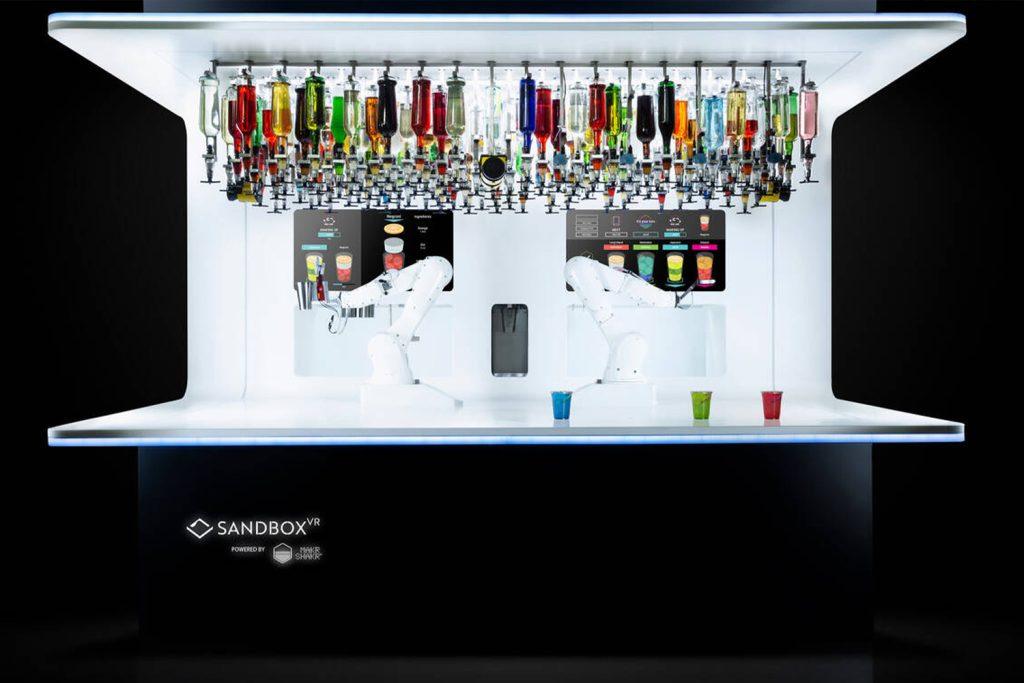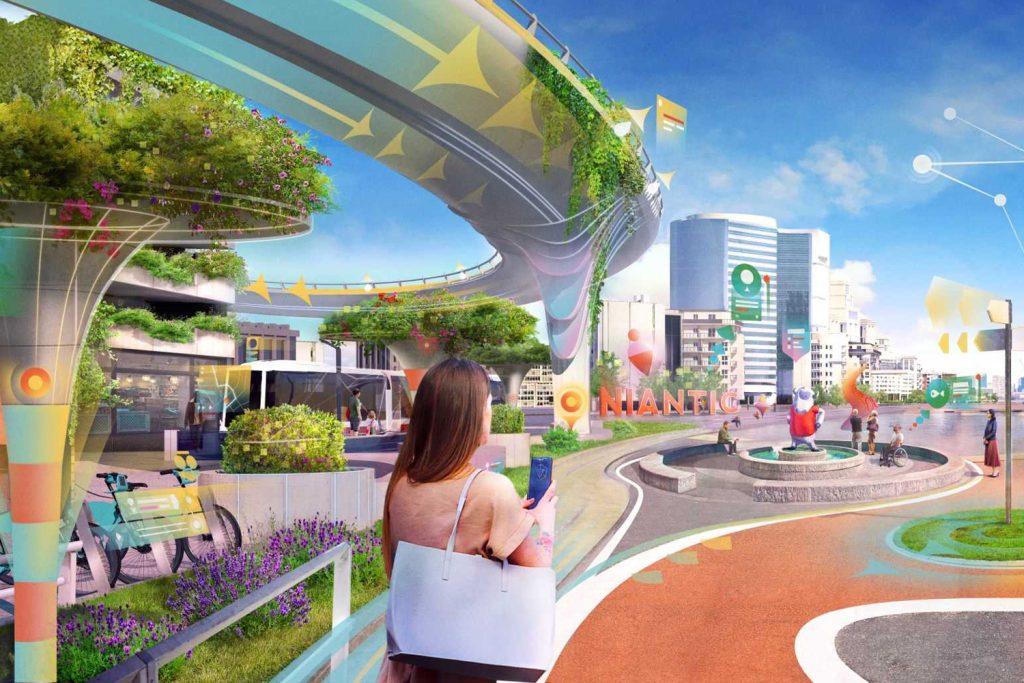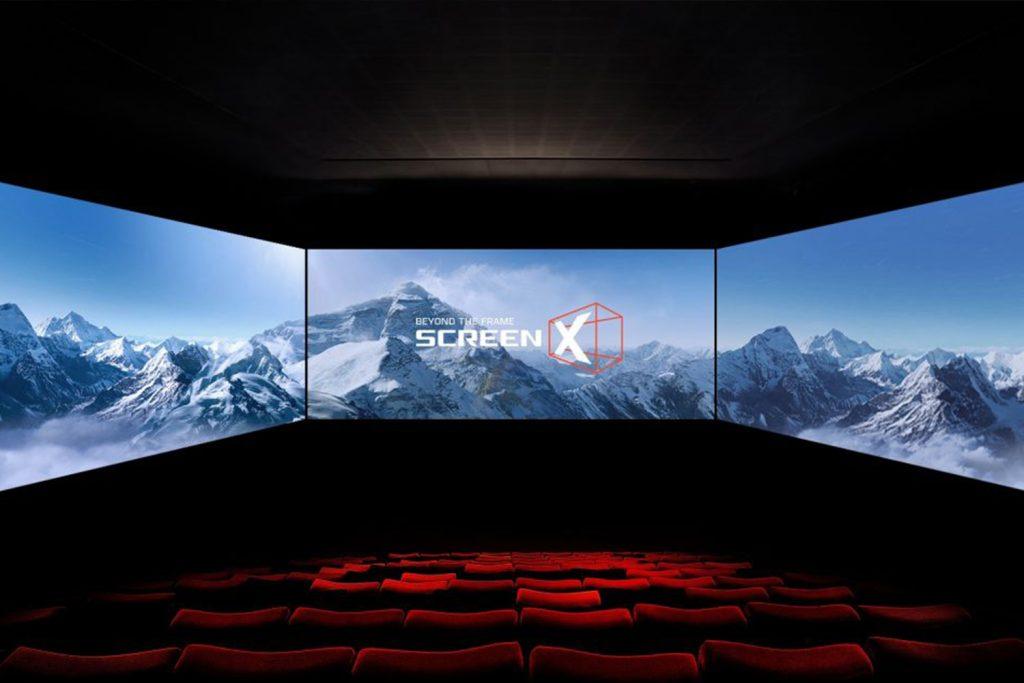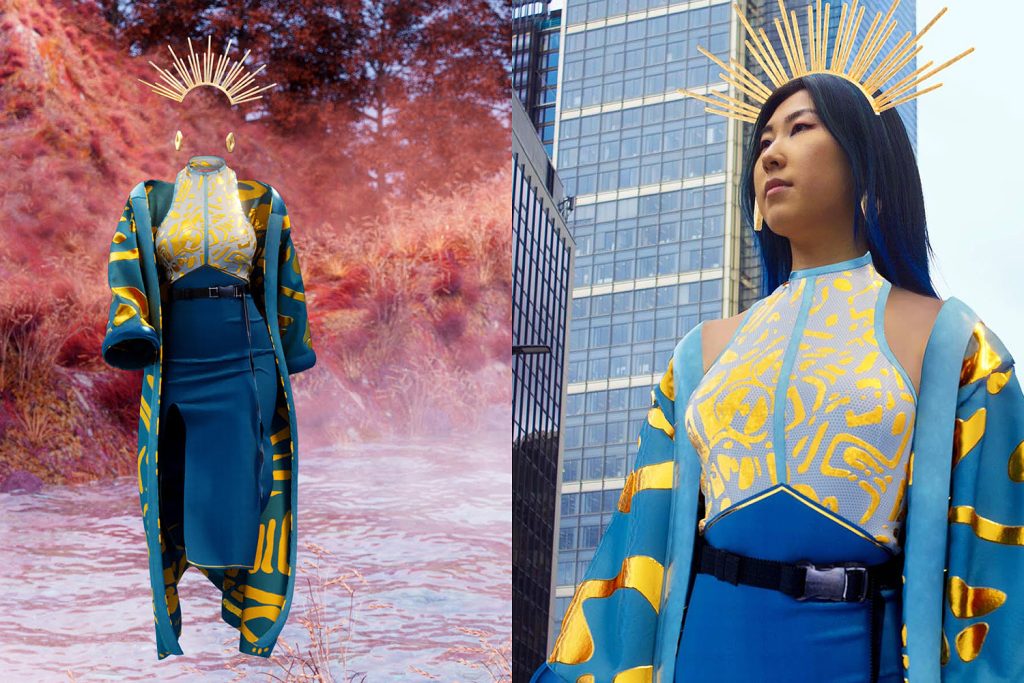At The WXO, we want to connect the dots across the Experience Economy and across the globe – so each week, we’ll be bringing you our round-up of the experiential stories that we think reveal something interesting, relevant or transferrable about the Experience Economy.
Welcome to Experience Radar 33, where we’re donning haptic suits at Sandbox’s first UK VR venue, learning top tips about marketing in the metaverse, and enjoying a triple-screen cinematic experience.
1. Live Inside Your Favourite Game

Taking group gaming experiences to the next level, Sandbox VR is launching its first UK venue in London’s Covent Garden this summer. As reported by Time Out, the 300-capacity, VR-fuelled social space is aimed squarely at adults and boasts a robot bartender able to mix and muddle up to 80 cocktails an hour. Visitors will be able to take part in free-roam team games in haptic suits that allow you to feel all the sensations experienced within the game, from dramatic changes in body temperature to – slightly ominously – the sensation of being shot.
Using new-gen Hollywood motion capture cameras, 3D precision full-body trackers and feedback suits, Sandbox creates an experience of touch, vibration and motion for the wearer, helping joystick junkies to feel like they’re living inside a game, where you’ll be able to physically interact with other players and explore an array of different virtual worlds. After a heavy gaming session, players can kick back in the space’s futuristic lounge area and re-watch their gaming highlights over a Star Trek-inspired Samarian Sunset cocktail shaken up by the UK’s first in-house robotic bartender, IG-1, aka the Makr Shakr.
2. Marketing In The Metaverse

Love it or loathe it, the metaverse is here to stay and is having a powerful impact on consumer behaviour and buying habits. Tina Thompson, a digital strategy director at N2O, believes brand owners should be making the most of the metaverse as a powerful marketing platform. “There’s huge potential for brand affinity and engagement in metaverse experiences, so get ahead of it: imagine accessing secret concerts in the metaverse at a festival or meeting the fashion designer’s avatar before buying a piece of couture. The opportunities are endless. Think of adding a unique experience layer to your shopper journey that uses on-the-go technology,” she writes in Campaign, advising brands that the key to success a strong cohesion between physical and digital offerings.
She also advises treating customers as creators, and showing them how they can harness the power of the metaverse by giving them opportunities to express themselves and be creative with your brand. The metaverse, Thompson believes, is the perfect space to communicate core brand messages. Understanding the wants and needs of your audience is also key. While Gen Z want to save the planet, the younger escapist Alphas “are not only pure digital natives but are full-on digital content creators by the age of six,” says Thompson, who urges brands to tap into this growing love of escapism as a marketing opportunity.
3. London To Get Giant Digital Art Space

Proving itself to be at the bleeding edge of digital art developments, London is to get a huge dedicated immersive art space this year. As reported by The Art Newspaper, Frameless will open in Marble Arch in the autumn and will be the largest space of its kind in the country. The 30,000 sq. ft space will be set across two floors in a newly redeveloped tower complex. Digital renditions of works by artists such as Cezanne, Kandinsky, Monet, Rembrandt and Klimt will be projected using 4K resolution tech across the walls, floors and ceilings, which will prove Instagram gold for visitors. CEO Richard Relton has grand plans for the venue, which he wants to become a top-ten ticketed London attraction.
According to The Art Newspaper, Japanese electronics conglomerate Panasonic will be in charge of the majority of the tech for the exhibition space. The plan is for Frameless to become a “multi-location experience”, with further attractions rolled out across major cities over the next five years. “The current focus is on acquiring future sites for Frameless on a long-term basis, but we are open to considering pop-up opportunities as the digital immersive arts sector grows and diversifies,” a Frameless spokesperson told the paper. Frameless is hoping to emulate the success of similar immersive art experiences across the world such as Paris’s L’Atelier des Lumières, which hosted a sell-out Van Gogh show in 2019.
4. Transforming Events Into Experiences

When it comes to organising events, be they digital, hybrid or physical, the stakes have never been higher, and in order to succeed, “marketers must create, build and sustain engagement”, writes Vaibhav Jain, CEO of virtual and hybrid event tech firm Hubilo, in Forbes. “Events must generate brand interest and loyalty, as well as leads and revenue,” Jain says, pointing out that today’s discerning audiences are seeking next-level experiences. “Achieving these immersive events is easier than it used to be, as is careful nurturing of the audience post-event to increase and extend ROI. For this, many marketers are embracing the digitisation of events as the centrepiece of their outreach,” Jain writes.
Another key to successful events is making them personal to the participants in order to maximise audience engagement, which can be done through polls, q&a sessions and competitions, the success of which can be gauged in real time. Jain stresses the need to identify what your audience wants from the event and deliver it, while creating more “wow” moments. “Better content and immersive, personalised experiences can create a stronger connection for your audience,” he says. “It’s about holding an event that audiences resonate with and want to be a part of and then creating better content, better networking opportunities, better engagement and better post-event experiences.”
5. ScreenX Is Shaking Up Cinema

Move over 3D and surround sound: ScreenX is the latest tech shaking up the cinema experience. As reported by The Hashtag Show, ScreenX – the world’s first multi-projection immersive cinematic platform – is bringing theatregoers an exciting new way to experience movies and looks to be the future of immersive cinema. ScreenX uses a unique model focused on giving moviegoers a 270-degree viewing experience, projecting across three screens inside cinemas, incorporating additional screens on the right and left-hand walls of the venue.
The goal is to give fans a unique immersive experience that blows the single-screen cinema experience out of the water. According to The Hashtag Show, the ScreenX experience feels immersive in a more natural way than 3D. “In real life, you observe your surroundings by looking around. And that’s what ScreenX gives you: the option to look around within a movie as if it’s something you’re really experiencing,” Jessica Lancaster writes. “The blend of immersiveness and personal agency really makes the ScreenX experience. Unlike 3D, you get a choice in how you view something on ScreenX.”
6. Dress Your Avatar In Puma On Roblox
Sports giant Puma is the latest brand to join online gaming platform Roblox with an immersive sports-based experience. As reported by Fashion United, ‘Puma and the Land of Games’, created in partnership with Wonder Works studio, is an explorable experience where players can unlock new zones, as well as gain access to virtual Puma sportswear pieces to dress their in-game avatars. Items utilise a new technology recently launched by Roblox called Layered Clothing, which enables users to rock virtual garments on any type of avatar.
“We’re excited to bring an engaging and fun sports experience to the Roblox community,” said Adam Petrick, Puma’s chief brand officer. “The new Layered Clothing technology allows players to express their creativity and style, enabling our brand to create greater synergies between the physical and digital world.” Visitors to the online world can take part in immersive mini games and training activities designed to mirror an athlete’s training lifestyle. Puma joins the likes of Clarks, Nike and Tommy Hilfiger, all of which have launched Roblox experiences.
7. Will Virtual Clubbing Catch On?

The nightlife industry was one of the hardest hit during the pandemic and has yet to fully recover from the lifestyle shifts it created. With the rise of the metaverse and JOMO (the joy of missing out) culture, could we be witnessing a new era of virtual clubbing that doesn’t require killer heels and an LBD? According to the Financial Times, partying as an avatar emerged as a fast-growing activity during the pandemic that provided a market for virtual clothing and accessories, including limited-edition trainers selling for over $10,000 a pair.
Virtual nightclubs provide valuable clues to future trends and where early profits lie in the metaverse. Virtual spaces have helped to accelerate the development of technologies, including digital “twins” of real people, hyper-real graphics and immersive audio. For savvy, tech-smart entrepreneurs there is money to be made in the space. “Acquiring technologies related to digital humans, immersive devices and visual effects is now crucial for future competitiveness in the shift to the metaverse,” CJ ENM’s chief executive, Kang Ho-sung, told the FT.






